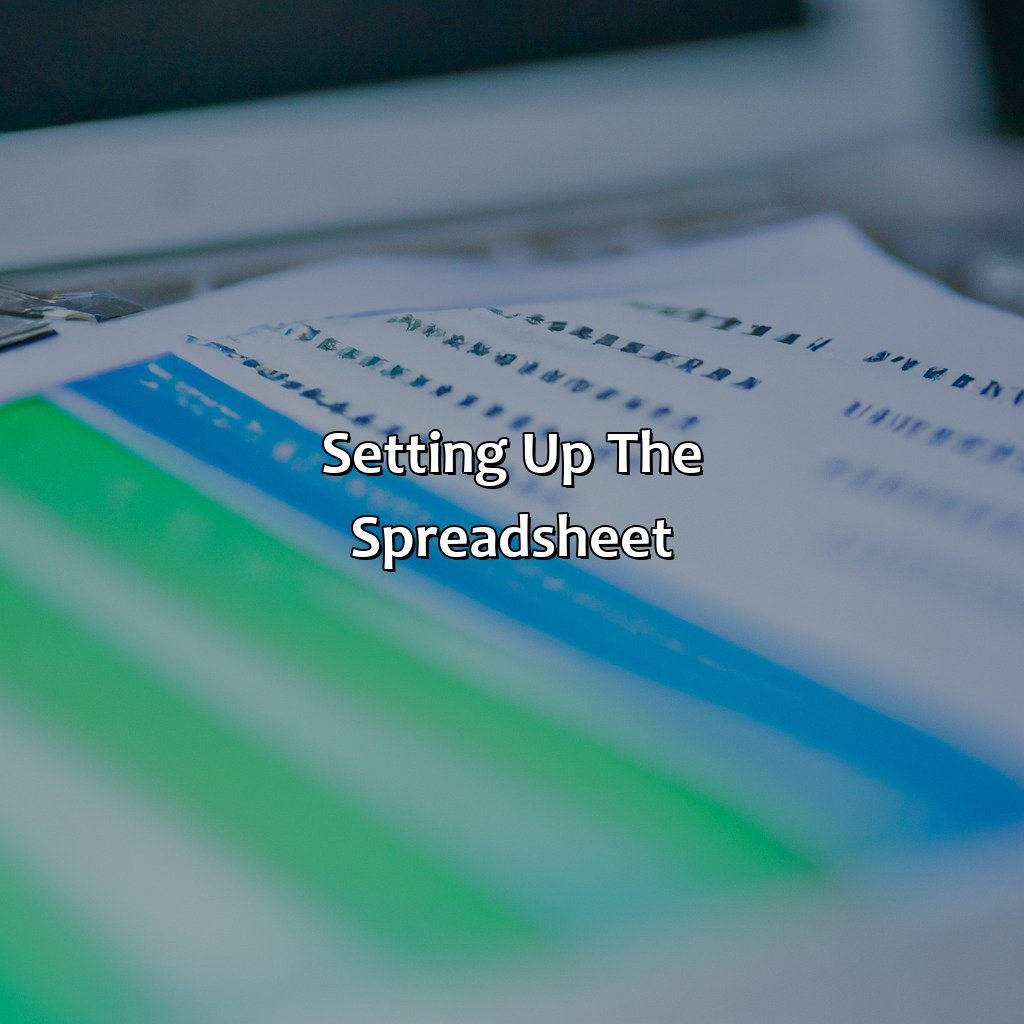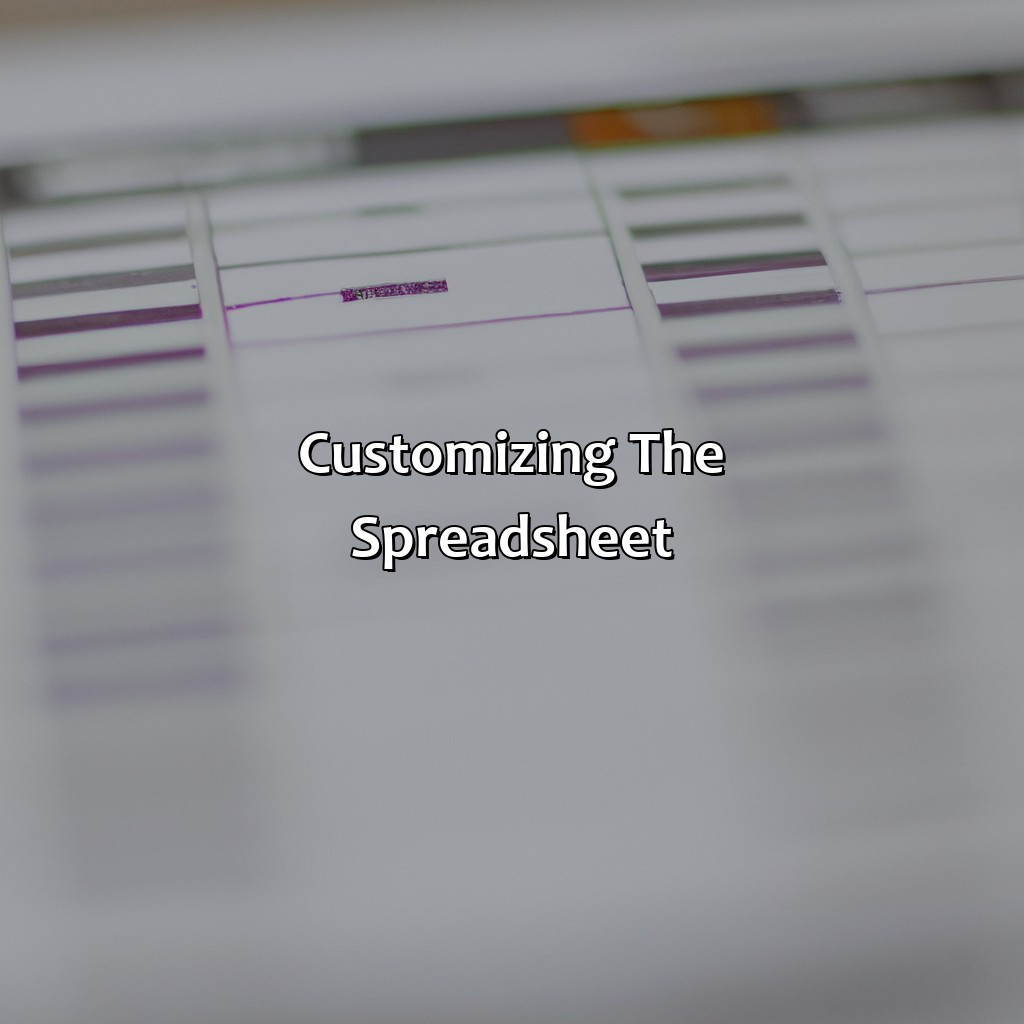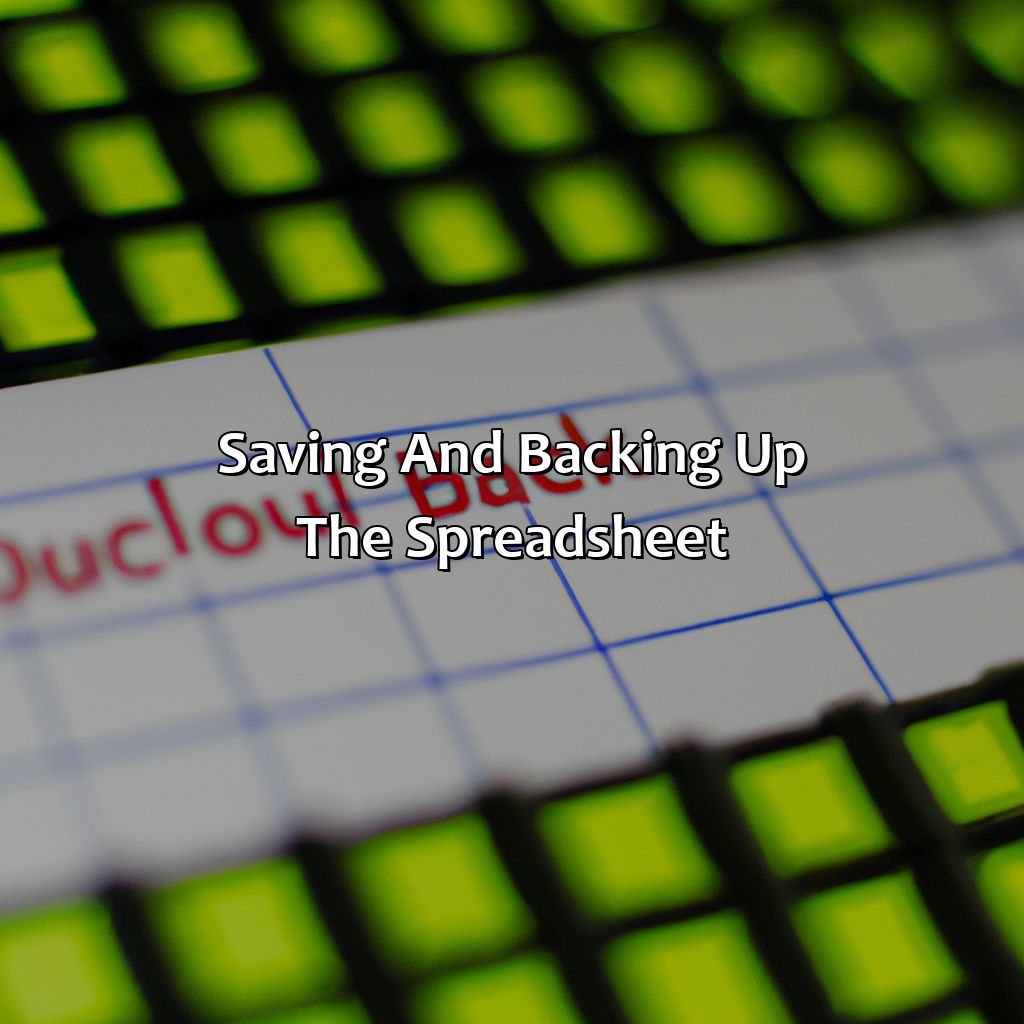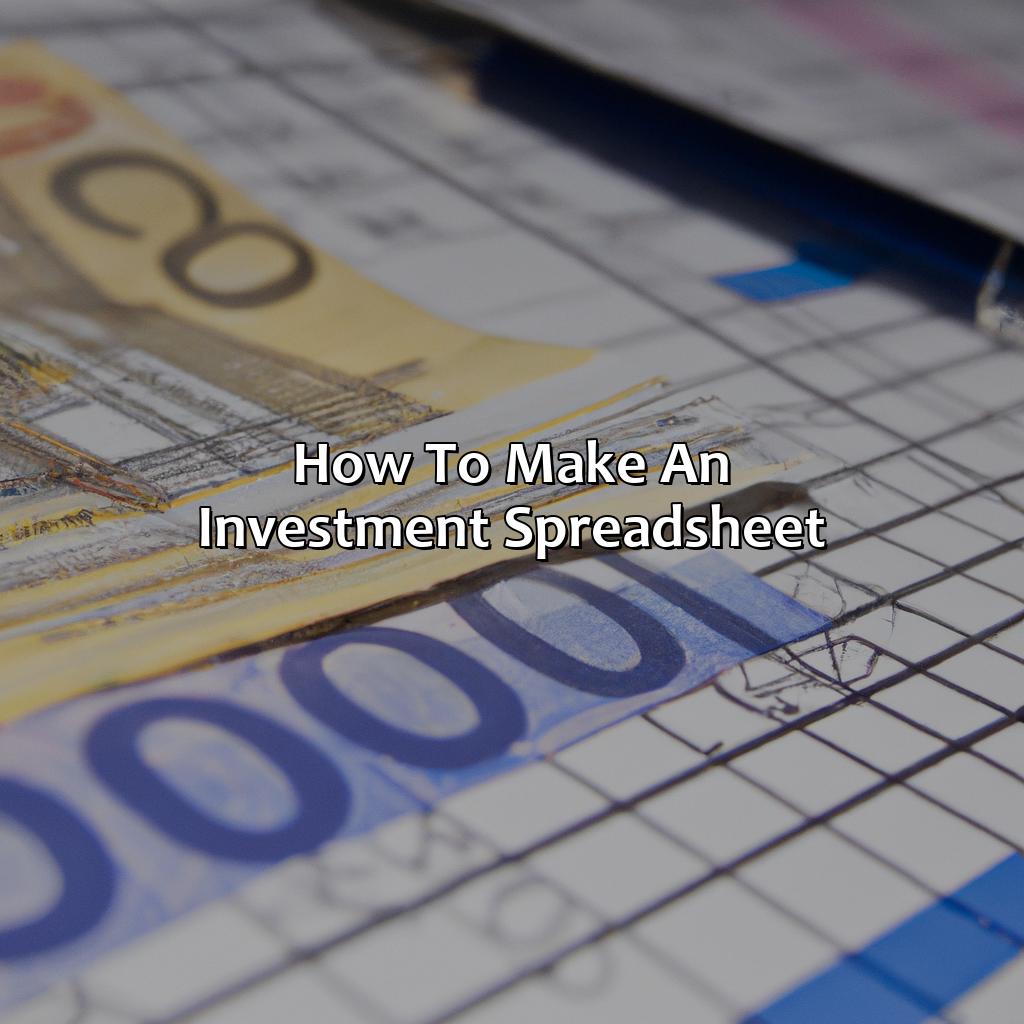How To Make An Investment Spreadsheet?
Key Takeaway:
- Setting up an investment spreadsheet involves creating columns for stock/asset details, purchase information, cost information, and performance information to organize data efficiently and make it easy to analyze the portfolio.
- Inputting data involves adding new investments and updating existing investments regularly to ensure the spreadsheet remains accurate and up-to-date.
- Utilizing formulas is essential to calculate returns, track performance and analyze investment portfolio. Creating custom formulas can automate calculations and save time.
- Customizing the spreadsheet by formatting cells, adding charts and graphs can provide visual representation of data, making it easier to recognize trends and patterns in the investment portfolio.
- To protect against data loss, saving and backing up the spreadsheet on a regular basis is important. It ensures that changes are not lost, and the information is always readily available.
Do you want to save money and grow your wealth? Creating a personalized investment spreadsheet can help you keep track of and optimize your investments over time. With clear goals and a few key tips, you’ll be ready to master your finances.
Setting up the Spreadsheet
Setting Up Your Investment Spreadsheet
To ensure a smooth investment journey, setting up your spreadsheet correctly is crucial. Here’s how:
- Identify Your Goals and Strategies: Before you start building the spreadsheet, outline your investment goals and the strategies you plan to use.
- Organize the Spreadsheet: Create separate sheets for different assets and use clear and concise labels. Format cells for better readability.
- Set Up Live Data Feeds: Use Yahoo Finance or Google Sheets to import live market data for each asset. This ensures that you always have the most up-to-date information.
- Input Your Asset Data: Input the necessary data for each asset, including the purchase price, quantity, and current market value. Use formulas to calculate the total cost, total value, and capital gain/loss for each asset.
- Track Your Progress: To evaluate your investment progress, use charts and graphs to visualize your portfolio’s performance over time.
To take your investment spreadsheet to the next level, consider automating certain processes or incorporating advanced investment analysis tools. Remember to keep your spreadsheet up-to-date and make changes as necessary.
Investment spreadsheet management may seem overwhelming at first, but taking the time to set it up correctly and maintaining it will pay off in the long run.

Image credits: retiregenz.com by Adam Washington
Creating the Columns
The first step in creating an efficient investment spreadsheet is organizing its columns. A well-defined column structure enables you to spot the strengths and weaknesses of your investment portfolio quickly. Divide the columns into separate sections such as “Asset class,” “Investment type,” or “Cost basis,” and include relevant financial data in each section.
To create a table for your investment spreadsheet, use <table>, <td>, and <tr> tags. Label each column with its title, and populate each row with specific financial information. A good layout choice can mean the difference between a spreadsheet you can quickly revise and one that takes longer to maintain.
To customize your table, you should include additional columns for the necessary financial data you plan to add to your investment tracking spreadsheet. For example, you might add a “Cumulative Return” column to track the good or bad performance of individual investments. Avoid using too much jargon, and keep the columns straightforward and simple to avoid confusion.
Implementing a well-defined column structure for your investment tracking spreadsheet is a valuable skill. In this way, you can use the spreadsheet data to analyze your investment choices’ progress over time. The right column layout will help you make better decisions in the future.
Inputting Data
Investment Spreadsheet: Data Inputting Process
When it comes to building an investment spreadsheet, Data Inputting is a fundamental step.
Follow these six steps to input data effectively:
- Gather your investment data, including stock prices, financial statements, and other relevant information.
- Determine which data you want to include in your spreadsheet and organize it by categories.
- Choose appropriate labels for each column and enter them correctly.
- Check for errors and enter data accurately, using proper formatting and formulas.
- Include additional information, such as financial ratios or performance indicators, if necessary.
- Save and review your work to ensure accuracy and completeness.
In addition, make sure that you update your spreadsheet regularly, especially when new data becomes available, to keep track of your investments effectively.
Don’t miss out on the benefits of an investment spreadsheet. Start inputting your data now.
Invest in your future with a well-organized and accurate investment spreadsheet!

Image credits: retiregenz.com by Yuval Woodhock
Utilizing Formulas
Professional Guide to Using Formulas on an Investment Spreadsheet
Using formulas on an investment spreadsheet can revolutionize the way you approach investing your money. By creating a customized spreadsheet, you can easily monitor your portfolio’s performance, set up alerts for buy and sell points, and automatically calculate your returns.
To start using formulas, begin by understanding the basic functions such as SUM, AVERAGE, and IF. These functions allow you to add up columns, find averages, and create conditional statements. Once you master these, move on to more complex formulas such as VLOOKUP and INDEX/MATCH for more advanced analysis.
It’s important to note that formulas require precise inputs and data formats, so be sure to double-check your work before relying on the results. Using a combination of formulas and formatting tools such as conditional formatting and data validation will help ensure accurate and efficient analysis.
Many successful investors rely on spreadsheets for tracking their investments, including Warren Buffett who famously uses an Excel spreadsheet for valuation analysis.
Incorporating formulas into your investment spreadsheet can elevate your investment strategy and improve your investment results. With some practice and a good understanding of the functions, you can create a highly customized and efficient tool to manage your portfolio.

Image credits: retiregenz.com by James Woodhock
Customizing the Spreadsheet
To Personalize Your Investment Tracking Document
When it comes to customizing your investment tracking sheet, it is crucial to have a format that suits your specific needs. By configuring your document to your specific needs, you will have an effective tool that enables you to monitor your investment portfolio successfully. Here’s how you can personalize your investment spreadsheet:
- Rename Sheets – Update sheet tabs’ names to describe account or investment type clearly.
- Customize Cells – Tailor the width and height for an optimal view. Modify cell formats to show currency or percentages.
- Add Columns – Add columns that track areas beyond the standard price and quantity. Examples include notes, dividends, fees, and others.
Make sure to consider essential information you’ll need. Combining this new data’s columns with present information means you have an all-in-one view of your investment portfolio. This way, you can gain insights into which investments could be performing well.
It is important to note that your customization depends on your investment plan. There is no universal sheet as everyone’s needs are different. Experiment and make edits as you see fit.
Investors use custom spreadsheets to track their investments for a long time. One of the most famous examples includes Julian Marchese, a young investor whose grandfather mentored him about investing. He was just 15 years old and built a spreadsheet of his investments, and by 2021, at the age of 23, he is a millionaire investor.

Image credits: retiregenz.com by Adam Woodhock
Saving and Backing up the Spreadsheet.
Ensuring Data Security of the Spreadsheet
Safekeeping your investment spreadsheet is crucial to ensure all the accumulated data is secure and accessible for future reference. Here, we’ll discuss how to protect your data and back up your investment spreadsheet.
A Guide to Securing and Backing up Your Investment Spreadsheet
- Save your work intermittently: Develop a habit of saving your work frequently to protect your data from unforeseen lost or corrupted files.
- Use a secondary device: Use secondary devices like external hard drives or cloud storage services like Dropbox or GDrive for an additional level of security.
- Use antivirus software: Keep your computer protected with antivirus software to avoid any malware attacks that could harm your spreadsheet files.
- Password protect your spreadsheet: Set a password for your investment spreadsheet to protect it from unintended access.
- Create multiple archives: Back up your investment spreadsheet by creating multiple versions of it and label them efficiently, such as by date or category.
Unique Details to Consider for Investing Spreadsheet Backup
Frequent copying and replication of your investment spreadsheet will greatly enhance its safety and ensure your data’s security. Ensure that you are using reliable and secure storage options when it comes to backing up your spreadsheet.
A Real-Life Example
Recently, a company that had invested heavily in the stock market reported a computer crash that deleted all its files, including the investment spreadsheet. It took significant time, resources, and expenses to recover their data. By having a reliable backup system in place, losses such as these can be avoided.

Image credits: retiregenz.com by James Jones
Five Facts About How To Make An Investment Spreadsheet:
- ✅ A good investment spreadsheet should include information about the type of investment, its purchase cost, expected return, and the duration of investment. (Source: Investopedia)
- ✅ The spreadsheet should also include regular updates of investment portfolio performance to track progress towards financial goals. (Source: NerdWallet)
- ✅ To make the spreadsheet easy to understand, use clear headings and organize information in a logical format. (Source: The Balance)
- ✅ The spreadsheet should have built-in formulas to automatically calculate important metrics such as average rate of return and portfolio diversification. (Source: Forbes)
- ✅ It’s important to periodically review and update the investment spreadsheet to ensure it continues to meet your financial goals. (Source: Charles Schwab)
FAQs about How To Make An Investment Spreadsheet?
How do I create an investment spreadsheet?
Creating an investment spreadsheet requires a step-by-step process. Firstly, you will need to outline your goals and objectives and then create columns for your investment accounts, investments, dividends, and data analysis. Secondly, you can input the information for each investment and customize the spreadsheet to meet your personal needs. Lastly, you can use the spreadsheet to track your investment progress and identify areas for improvement.
What are the essential features that my investment spreadsheet should have?
A functional investment spreadsheet should have columns for different account types, investment types, investment returns, investment costs, and trading fees. It should also include graphs or charts presenting your investment performance, and you should be able to calculate your investment earnings, making decision-making easier.
What tools can I use to make an investment spreadsheet?
Microsoft Excel and Google spreadsheets are popular tools for creating investment spreadsheets, and both offer a vast array of customizable features. There are also online platforms like Personal Capital, Quicken, and Mint, which provide investment tracking tools and comparative analysis.
What are the benefits of using an investment spreadsheet?
An investment spreadsheet is an excellent tool for keeping track of your investments, monitoring performance, and making intelligent decisions when analyzing your portfolio. It also enables you to predict future investments, evaluate the performance of investments in comparison to others, and make informed investment decisions.
How often should I update my investment spreadsheet?
It’s crucial to update your investment spreadsheet regularly to reflect changes in your investment portfolio, such as transactions, returns, or expenses. Updating your spreadsheet weekly or biweekly ensures that it remains accurate and relevant.
Are there any online resources available to help with investment spreadsheets?
There are many online resources available to assist you in creating and customizing your investment spreadsheet. Websites such as Investopedia.com, Nerdwallet.com, and Thebalance.com offer valuable information for beginners and advanced investors alike. Online community forums like Reddit and Quora provide an opportunity to connect with fellow investors and gain more insights and support.
